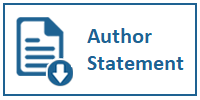The Impact of Communication Dynamics on Social Media towards Environmental Conservation
A Case Study on the Policy of Kamojang and Papandayan Nature Reserves' Change of Status
DOI:
https://doi.org/10.31937/ultimacomm.v11i1.1111Abstract
Social media has transformed into a "free" advertising instrument. By using User-Generated Contents (UGC) technology, an instant publication about engaging activities in a particular area will encourage other people's interest to have the same experience. However, the effectiveness of tourism promotion turned out to have negative impacts, one of them is related to environmental issues because the behavior that has been published is not necessarily on the same track with the perspective of environmental conservation. It happened to Mount Kamojang and Papandayan nature reserve, West Java, where a part of the area has been converted into a nature tourism park. One reason for the change of status is to attract people's interest to visit the Kamojang and Papandayan areas. This interest could be seen from the many comments on social media that also promote the natural beauty of the place. By using a qualitative method with a case study approach, this study explains the dynamics involved in social media that influence the counter-productive behaviors in environmental issues. The results of the study show that social media contents have encouraged the public to access nature tourism areas, including the closed area in the Garut Regency. Additionally, the viral information was then used by stakeholders as a weapon to persuade the authorities to change the status of the area into a a tourist attraction. This study recommends a review of the policy related to the nature reserve's status amendment, considering the sustainability of environmental conservation in Indonesia.
Keywords: kamojang papandayan, nature reserve, social media, UGC, promotion
Downloads
Downloads
Published
How to Cite
Issue
Section
License
Ultimacomm Jurnal Ilmu Komunikasi allows readers to read, download, copy, distribute, print, search, or link to its articles' full texts and allows readers to use them for any other lawful purpose. The journal allows the author(s) to hold the copyright without restrictions. Finally, the journal allows the author(s) to retain publishing rights without restrictions
1. Authors are allowed to archive their submitted article in an open access repository
2. Authors are allowed to archive the final published article in an open access repository with an acknowledgment of its initial publication in this journal















